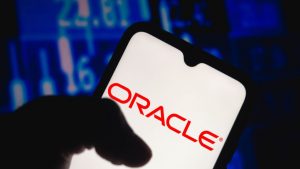- August 9, 2022
- Jeff Lazarto
- Reading Time: 3 minutes

Oracle has been criticized for more than a few of their business practices, especially their Fusion sales approach in creating different sales pillars. These pillars have historically been a burden for Oracle customers to navigate.
However, Oracle recently announced, as part of their internal kick-off sales team meetings for FY2023, that there will be one account executive responsible for selling Fusion ERP, EPM, HCM, and CX (customer experience) into each account, effectively removing the Fusion sales pillars.
This is a significant step forward for Oracle and one that should be well received by customers. Here, I will outline how their new approach compares to the Fusion sales pillars, why this shift may alleviate some pain points for customers, and what Oracle customers need to know moving forward.
Understanding How Oracle’s New Model Compares to the Fusion Sales Pillars
A common pain point for customers has been receiving multiple calls from various Fusion account executives trying to pitch their solutions. Assuming a customer was interested in one or more of the Fusion solutions, customers could request that Oracle conduct product demos across the various solutions.
However, account executives only cared about selling the solutions within their pillar because they had sales quotas to meet and would only get credit for sales within their respective pillar. Unsurprisingly, this was frustrating for customers; the Oracle value proposition was presented as an integrated cloud solution, but the pricing negotiations were done on a transactional basis, with separate pricing and discounting percentages based on spend levels within each pillar.
Oracle’s new model removes these pillars, enabling customers and account executives to focus on an integrated solution and proposed pricing and discounting across the entire bill of materials that aligns with a customer’s overall investment commitment and organizational readiness. For example, a customer may be interested in a digital transformation initiative, with a primary focus on ERP, and some EPM and HCM capabilities to start. This might reflect all the organizational and business process change that the customer is capable of absorbing at this time, with the future goal of expanding the EPM and HCM footprints.
Under Oracle’s previous approach, the customer would receive different discounting percentages across the 3 pillars (ERP, EPM, and HCM), and at times this difference was significant. Customers were forced to make a choice: accept the different discounting per pillar, only purchase ERP and forego the other pillars until they were ready to make a larger commitment or, in some cases, be turned off by the approach and delay the entire purchase to look at other options in the market.
A fourth option was to escalate to a more senior sales level within Oracle to try to negotiate better discounting for the pillars with the smaller spend levels. However this can be a difficult and time consuming process for both the customer and the Oracle account executives and often does not yield the desired results.
Based on this new sales model, discounting may still be different on a line item level in any particular bill of materials, but it should no longer be drastically different across the board by pillar. The account executive now has the ability to take a holistic approach to discounting based on overall spend and commitment to Oracle, as well as other relationship factors.
What Customers Should Know Moving Forward
However, note that Oracle will still have different account executives for selling their technology stack (IaaS and PaaS) and their industry vertical solutions or global business units (GBUs). GBUs provide solutions that are specifically tailored to an industry, such as financial services or healthcare.
The Fusion pillars mentioned earlier are solutions for business functions, such as finance and HCM, that apply across all industries. In some strategic accounts, Oracle may experiment with having one account executive with authority to sell Fusion and the technology stack.
While customers may still have multiple account executives contacting them for Fusion related sales and JAVA, this is definitely a big step in the right direction by Oracle that will make things more streamlined for customers. This holistic sales approach aligns much better with Oracle’s message of the value of an integrated platform.
Additionally, if a customer happens to be interested in Fusion ERP, some GBU solutions, and IaaS/PaaS, it will be much easier for Oracle to coordinate between the account executives and collaborate on presenting a holistic proposal.
We have been critical of Oracle business practices in the past and have made some recommendations to address customer concerns, so we want to give credit where credit is due to Oracle. We hope this is the start of Oracle seriously listening to customer concerns, reviewing their sales and business practices, and then making adjustments that will benefit both Oracle and its customers.
Post a comment below, follow me on Twitter @jeffrey_lazarto, find my other UpperEdge blogs, and follow UpperEdge on Twitter and LinkedIn. Learn more about our Oracle Commercial Advisory Services.
Related Blogs
3 Common Mistakes When Counting Your Oracle Named User Plus License Requirements
NEW: Obtain Oracle SaaS Pricing with Free Estimate Calculator
Oracle Fusion ERP: 4 Key Terms to Negotiate
About the Author

